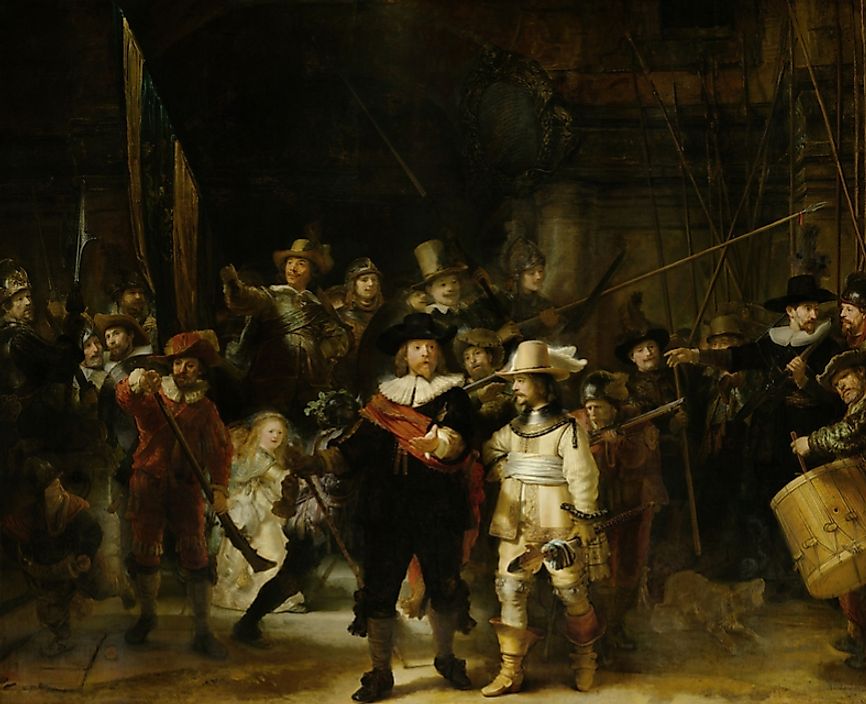Famous Artwork: The Night Watch

The Night Watch is a 1642 painting made by the renowned painter Rembrandt. It is one of his most famous paintings. The Night Watch is an oil on canvas painting and a group portrait of a militia company possibly celebrating Queen Maria de Medici’s 1638 visit to Amsterdam. The painting was first referred to as “The Night Watch” in the 18th century due to the darkening of the painting over the years of exposure. The darkening made the painting look like a night scene although the events happened in the daytime. The use of lighting, color, and motion make The Night Watch a unique piece of art from the 17th century. The military portrait, unlike those of his time, shows the participants in motion, with the characters in human size giving the painting life and continuity.
Rembrandt Van Rijn
Rembrandt is a 17th-century Dutch painter who is one of the most famous and talented artists of Amsterdam. Born in 1606, Rembrandt studied in Latin school and Leiden University before apprenticing under the painters Jacob van Swaneburg and Pieter Lastman. As a painter, he applied various styles and themes, mainly painting portraits, landscapes, and depicting narratives through his paintings. His realist style developed over time, allowing him to experiment with newer styles that did not exist previously. Rembrandt enjoyed great recognition and financial success from his work and trained upcoming painters for close to two decades. Later in his life, his financial situation deteriorated leaving him a poor and well-appreciated painter. He died in 1669 and was buried at an unknown location in Westerkerk.
Location
The Night Watch has changed its locality over time. The Night Watch is a collection of the Amsterdam museum but is on display in the Rijksmuseum. It was first displayed in the Kloveniersdoelen, the meeting hall for the musketeers, after its completion until 1715 when it was moved to the Amsterdam Town Hall. During the reign of Napoleon in the Netherlands, the painting was moved to the Trippenhuis, the modern day Dutch Academy of Sciences. The Night Watch was first displayed in the Rijksmuseum between 1885 and 1939. During the Second World War, the painting was removed from display and stored in the Radboud Castle rolled up around a cylinder. The painting has since been restored to its place in the Room of the Night Watch. A replica of the original painting is displayed at the Canajoharie Library and Art Gallery in New York.
Legacy and Appraisal
The Night Watch has been an object of praise and criticism throughout the centuries of its existence. Beloved by the Dutch, the painting depicts democracy of the nation after their independence from the Spanish. With everyone in motion, the painting shows the humanity of soldiers by depicting their vulnerability instead of military discipline. The painting has inspired many artistic works in music, writing, sculpture, and film. Some works inspired by the painting include the 3D bronze sculpture of the painting by Alexander Taratynov, A Ronda da Noite by Agustina Bessa Luis, Nightwatching by Peter Greenaway, and Passion by Jean-Luc Godard. Rembrandt earned 1600 Dutch guilders from the painting. Currently, the painting has no value attached to and is not for sale since the Rijksmuseum has not insured it.











